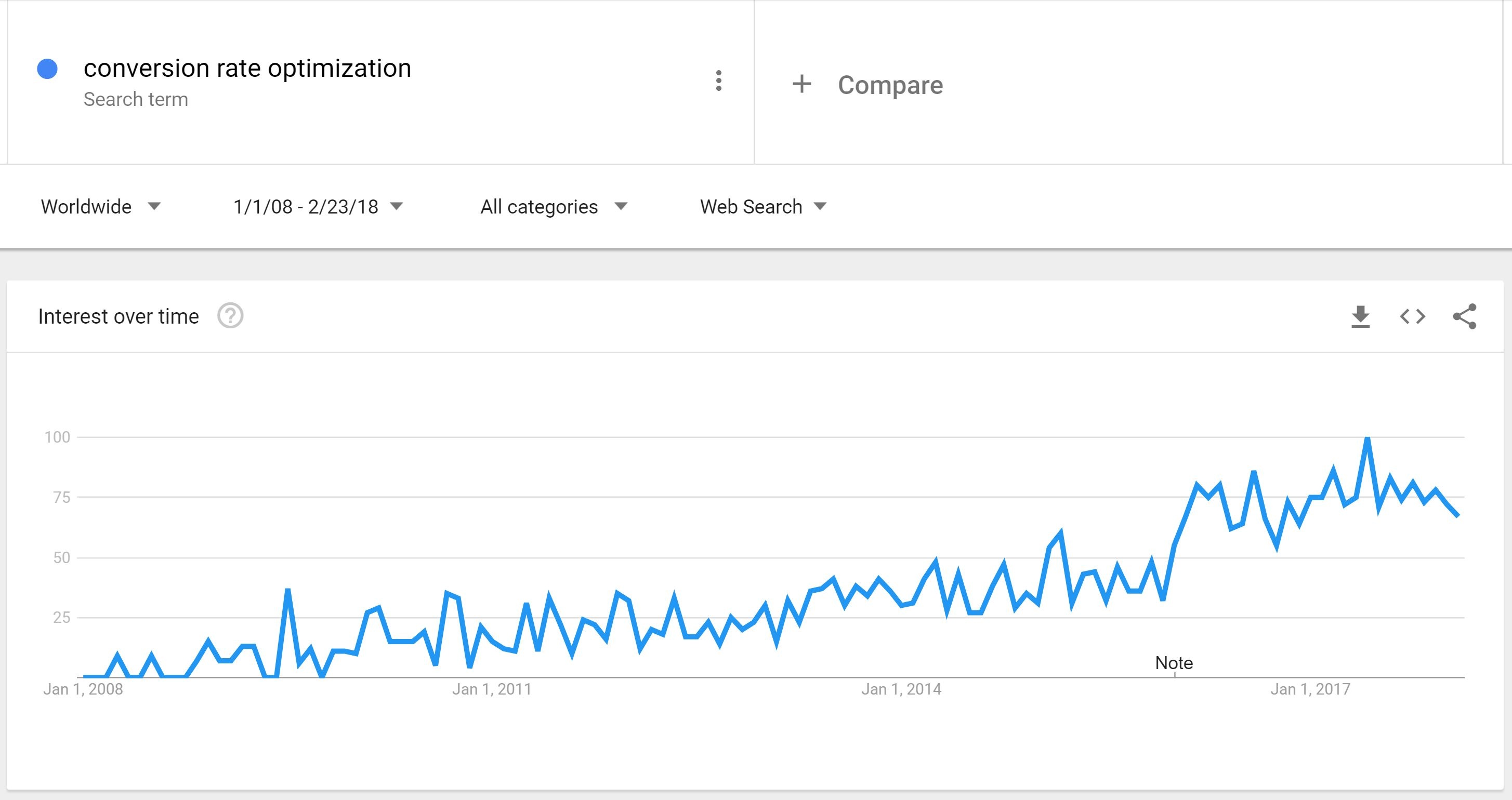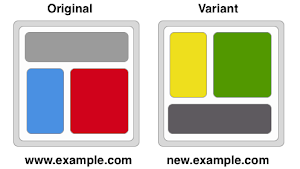In today’s hyper competitive e-commerce environment, it’s no surprise that there are more searches in Google related to Conversion Rate Optimization than ever before.

And while there are multiple layers to producing a good conversion rate, none are more important than your product landing pages.
Poor functionality here can mean the difference between making the conversion and losing the visitor for good.
Considering product pages are the most visited parts of any e-commerce site, the importance of providing end users a good experience can’t be stressed enough.
Not only can it turn a visitor into a customer, but it can also help to decrease your bounce rates and promote further engagement with your site.
With this in mind, here are 6 product landing page tips that can help to increase your e-commerce sites conversion rate.
1) High Quality Imagery is a Must
Shopping online allows us to browse and make purchases from anywhere at any time.
While the convenience of this is obvious, there’s one important factor missing from the equation: a physical experience.
When we go to the store, we’re able to physically hold, examine and/or try on the product we’re interested in buying.
When shopping online, this is simply not possible. So how can retailers overcome this challenge?
The answer is to simulate that physical experience with high quality, thorough imagery.
Studies show that nearly 67% of consumers consider product images to be “very important” and 50% of them believe high-quality photographs are more significant than description, reviews or ratings.
Therefore, it should be of utmost importance to focus a significant amount of attention to this portion of your product landing page.
There are a couple of great ways to bring the product to life for your e-commerce customers:
- Present the product from all angles.
- Try to include 3-4 photos of your products to give the shopper a full view of the product as if they were holding it their hand and examining it.
- Have a zoom feature that allows shoppers to see the product up close.
- Include images of the product being used for context.

2. Consider integrating full 360-degree rotating images onto the page. DueMaternity.com did, and they saw their conversion rate increase by 27%.
When deciding what’s best for your store, experiment with different varieties of image groups to help you determine which works best for you.
2) Incorporate Video
Video as a marketing tool within e-commerce is quickly becoming very popular.
It’s an easy way to shoppers to digest important information, and it’s a valuable way for you as the retailer to present an overview of a product in a more entertaining and attention holding fashion.

This can be a highly effective method for engaging your audience and even attract new visitors.
Studies show that people who watch product videos on an e-commerce site are 64-85% more likely to buy, making this form of content you can’t ignore.
Additionally, you’re more likely to be found in Google searches, as research suggests Google structures its search results to prioritize sites with video.
3) Engage Visitors with Live Chat
Live chat as a customer support option is a must in todays lightning quick e-commerce environment.
In fact, 44% of online consumers say that having questions answered by a live person while in the middle of an online purchase if one of the most important features a website can offer.
If someone has questions regarding a product, they want answers now. And the quickest way to deliver answers now is via live chat.
This is especially important for high-ticket items where shoppers are conducting in depth research.
Being available to them can mean the difference between converting the visitor into a customer and having them bounce to another e-commerce store.
4) Highlight Reviews and Testimonials
Prominently displaying reviews on your product landing pages is a great way to build trust with both new site visitors and existing customers.
Studies show that nearly 70% of online consumers look at a review prior to making a purchase, and that reviews are 12-times more trusted than product descriptions and sales copy from manufacturers.

Additionally, you’ll begin capturing more long tail SEO traffic and traffic from users searching “product name + reviews,” and other similar terms. This traffic is likely to be very high-quality traffic that will convert.
Don’t be afraid of bad reviews, as a recent study by Reevoo found that the presence of them can actually increase a sites conversions by 67%.
Why is this the case? Well, it comes down to a couple of things.
Nearly a third of surveyed online shoppers felt as though a site with only positive reviews engaged in some type of censorship.
Also, showing the bad with the good makes people believe you’re being completely transparent, and are more likely to trust you moving forward.
5) Optimize for Mobile
Providing users with a high-quality mobile experience is more important than ever in 2018, as the number of mobile internet users has officially surpassed desktop users and continues growing every day.
In the age of instant gratification, today’s consumer simply will not wait long for websites to load and certainly won’t shop on a site that isn’t mobile friendly.
A site-speed study by Kissmetrics found that 47% of consumers expect a page to load in 2 seconds or less, and 40% will abandon a site that takes more than 3 seconds to load.
There are several tools available to conduct mobile site load time tests, including Google’s Page Speed Insights, that can help you better understand how you can optimize your site for better load times.
Google’s mobile-friendliness tool is also available to specifically assess your websites mobile performance and give you a thorough overview of how you can improve.
And with 39% of all retail e-commerce expected to be generated via m-commerce (mobile commerce) in 2018, it would certainly be prudent to ensure a seamless mobile experience for your store.
6) A/B Test for Perfection
When it comes to conversion rate optimization, few if any actions are more important than A/B testing different versions of your landing pages.
The idea here is to present different versions of the pages to different groups of people at random and analyze the results to determine the best lay out.

Studies have shown that performing effective A/B tests leads to up to a 300% increase in conversion rate.
When developing an A/B testing plan, consider focusing on the following elements:
- CTA buttons
- Page layout
- Navigation
- Copy
- Checkout process
There are several tools available to conduct these tests, including Google Optimize. This free tool allows you to make changes to elements on your product landing pages so that different versions appear at random.
With the statistics provided, you’ll be able to make perfect your landing pages for maximum conversion rates.
Final Thoughts
A perfect product landing page isn’t easy to produce, but with these tips and more you should be well on your way to maximizing your conversion rate.
Testing different versions of different elements is the most effective way to pinpoint what works best for your individual store. What works for one won’t work for all.

